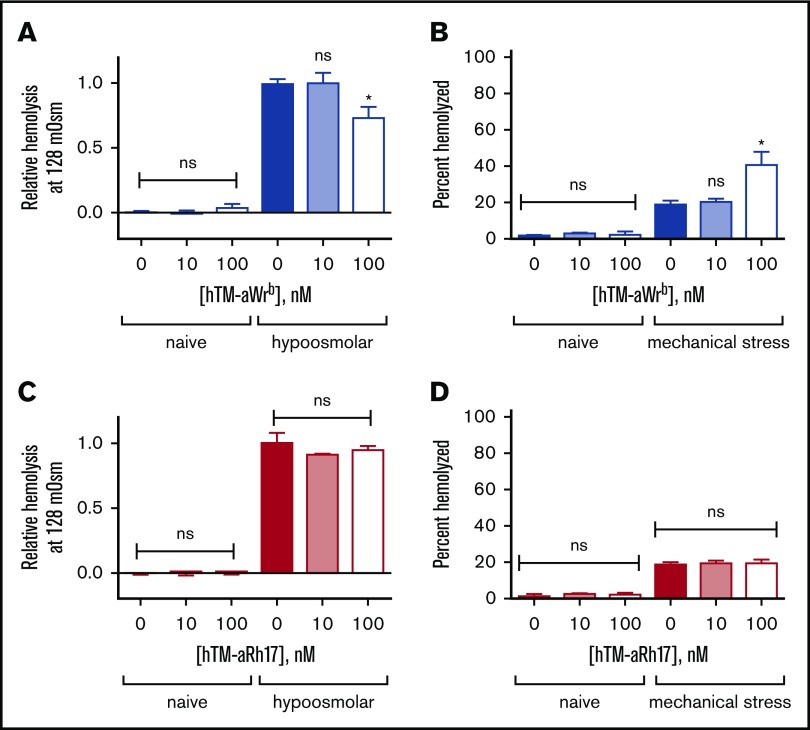Figure 3.
aRh17 and aWrb hTM-scFv fusion proteins demonstrate similar patterns of changes in RBC resistance to osmotic and mechanical stress as the parent scFv. Fusion proteins were added at 10 nM and 100 nM to 5% Hct RBC suspension, which produces a ratio of ∼104 and 105 fusion proteins per RBC and is below saturation for both target antigens. (A) aWrb hTM-scFv shows a dose-dependent decrease in hemolysis in response to osmotic stress and (B) a dose-dependent increase in hemolysis in response to mechanical stress. aRh17 hTM-scFv does not demonstrate any significant change in response to (C) osmotic stress or (D) mechanical stress. In all experiments, means ± SD are shown; n = 3 for each condition (*P < .05 compared with naive, 1-way ANOVA with Holm-Sidak correction for multiple comparisons).

